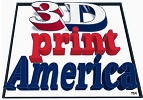When gluing 3D prints you need to use products and procedures that works for the filament type(s) you are working with. The following is a guide with suggested products for bonding 3D prints:
- PLA (Polylactic Acid): Use super glue (cyanoacrylate adhesive). Apply a small amount of glue to one of the surfaces, align the 3d prints, and hold them together until the glue sets.
· Products such as Gorilla Super Glue or Starbond Super Fast Thin CA Glue
- ABS (Acrylonitrile Butadiene Styrene):
· IPS Weld-On 16 Acrylic Cement, is an adhesive suitable for bonding ABS, apply a small amount to one of the surfaces, align, and hold them together until set. Use in well ventilated area with appropriate safety precautions.
· ABS can be solvent-welded using acetone, such as Vaxxen Labs 100% Pure Acetone, apply a small amount to joint area of both parts and press together firmly. The acetone will cause the ABS to partially melt and fuse the parts.
- PETG (Polyethylene Terephthalate Glycol): When gluing 3D prints of PETG using super glue (cyanoacrylate adhesive) is suitable for bonding them. Apply a small amount to one of the surfaces, align the parts, and hold them together until the glue sets. Two products that work well are:
· Starbond Super Fast Thin CA Glue.
- Nylon: Nylon can be joined using epoxy adhesive. Apply a small amount of epoxy to the joint area, press parts together, and allow the adhesive to cure. Products for Nylon include:
· J-B Weld Original Cold-Weld Steel Reinforced Epoxy
· PC Products PC-11 Epoxy Adhesive Paste.
- TPU (Thermoplastic Polyurethane): When gluing 3D printed parts made of TPU, it is best to use a flexible adhesive. Apply small amount to the joint area and press parts together until they are bond.
· A good made in USA choice is Starbond Flexible Medium CA Super Glue.
- PVA (Polyvinyl Alcohol): PVA is water-soluble support material, so PVA prints are not usually joined. To do so is difficult and generally temporary, though some have used wood glue products like Starbond Super Fast Thin CA Glue with varying success.
- ASA (Acrylonitrile Styrene Acrylate): While gluing 3D prints of ASA use super glue (cyanoacrylate adhesive). Apply a small amount to one of the surfaces, align the parts, and hold them together until the glue sets. Products include:
· Starbond Super Fast Thin CA Glue
· ABS-specific adhesive like IPS Weld-On 16 Acrylic Cement
- HIPS (High Impact Polystyrene):
· IPS Weld-On 16 Acrylic Cement, apply a small amount to one of the surfaces, align, and hold them together until set.
· HIPS can be solvent-welded using acetone, such as Vaxxen Labs 100% Pure Acetone, apply a small amount to joint are of both parts and press together firmly. The acetone will cause the HIPS to partially melt and fuse the parts.
- PC (Polycarbonate): For gluing 3D prints made of PC, the parts can be effectively bonded using epoxy adhesive. Apply small amount of epoxy to the joint area, press the parts together, and allow adhesive to cure as manufacturer’s instructions indicate.
· J-B Weld Original Cold-Weld Steel Reinforced Epoxy
· PC Products PC-11 Epoxy Adhesive Paste
- Wood-infused Filament (PLA with Wood Fiber): Use super glue (cyanoacrylate adhesive) when gluing 3D prints containing wood fiber. Apply a small amount to one of the surfaces, align the parts, and hold them together until the glue sets.
· Starbond Super Fast Thin CA Glue
- PP (Polypropylene): PP can be challenging to glue due to its resistance to adhesion, when gluing 3D prints of PP look for a polypropylene-specific glue.
· 3M Scotch-Weld DP8005. Lightly sanding the surfaces to be bonded with fine-grit sandpaper can help create more surface area for the adhesive to grip. Apply small amount of product to the joint area, press the parts together, and allow them to fuse.
Always follow the manufacturer’s precautions and instructions for the specific product used. Keep in mind when gluing 3D prints it is constructive to conduct tests on scrap pieces before bonding the main objects. This allows testing techniques and products to ensure adequate strength & adhesion can be reached when bonding 3D prints.
May your 3D journey be bonding!









